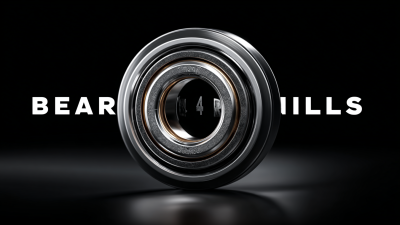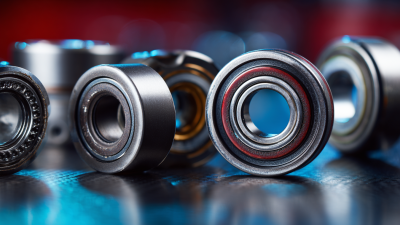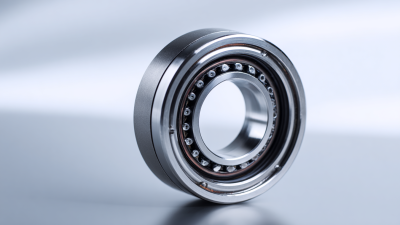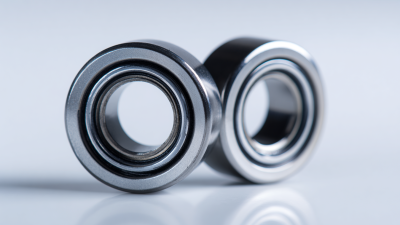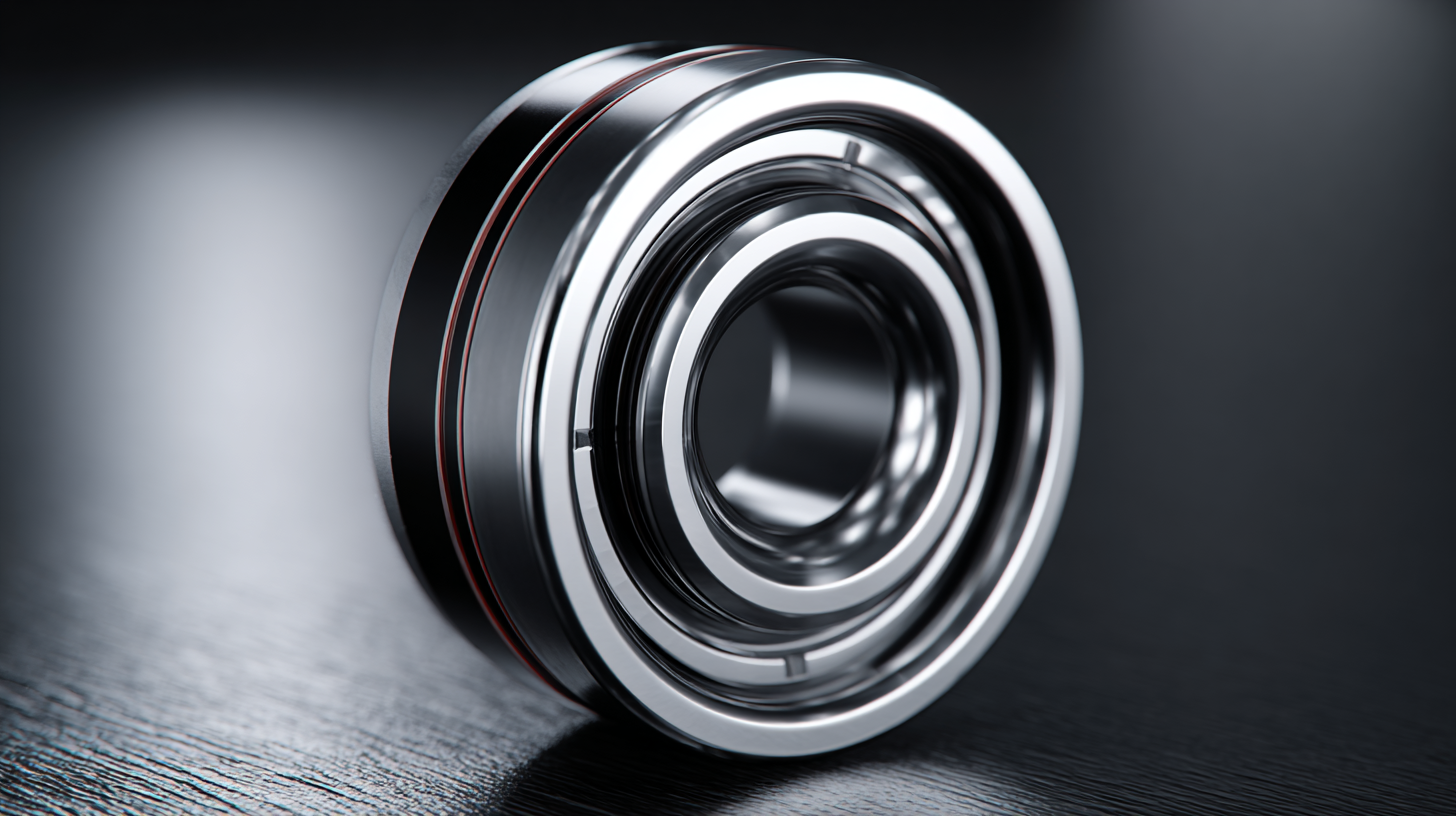 Angular ball bearings are increasingly recognized for their critical role in modern engineering applications, offering unique advantages that enhance performance and reliability. According to the 2022 Global Bearings Market Report by MarketsandMarkets, the angular ball bearing segment is anticipated to witness a significant growth rate, driven by the rising demand for high-speed machinery and precision instruments across industries. These bearings enable effective load handling in both radial and axial directions, making them essential in applications ranging from automotive to aerospace. By facilitating smoother operation and reducing friction, angular ball bearings not only contribute to improved efficiency but also extend the service life of machinery.
Angular ball bearings are increasingly recognized for their critical role in modern engineering applications, offering unique advantages that enhance performance and reliability. According to the 2022 Global Bearings Market Report by MarketsandMarkets, the angular ball bearing segment is anticipated to witness a significant growth rate, driven by the rising demand for high-speed machinery and precision instruments across industries. These bearings enable effective load handling in both radial and axial directions, making them essential in applications ranging from automotive to aerospace. By facilitating smoother operation and reducing friction, angular ball bearings not only contribute to improved efficiency but also extend the service life of machinery.
As industries increasingly prioritize performance and sustainability, understanding the benefits of angular ball bearings becomes paramount for engineers aiming to optimize design and functionality in their projects.
 Angular ball bearings are pivotal in modern engineering, contributing significantly to enhanced rotational efficiency across various applications. Their design, featuring a unique angular contact between the ball and raceway, allows them to accommodate both radial and axial loads simultaneously. According to a report by the Global Market Insights, the demand for angular ball bearings is projected to surpass $22 billion by 2027, driven by increased automation and the need for precision in industries such as aerospace and automotive.
Angular ball bearings are pivotal in modern engineering, contributing significantly to enhanced rotational efficiency across various applications. Their design, featuring a unique angular contact between the ball and raceway, allows them to accommodate both radial and axial loads simultaneously. According to a report by the Global Market Insights, the demand for angular ball bearings is projected to surpass $22 billion by 2027, driven by increased automation and the need for precision in industries such as aerospace and automotive.
One of the primary benefits of using angular ball bearings is their ability to maintain high-speed rotational performance with greater stability. Their design minimizes friction and heat generation, which is crucial for prolonging the service life of machinery. For instance, data from the American Bearing Manufacturers Association indicates that implementing angular ball bearings can lead to efficiency improvements of up to 30% in rotating equipment, highlighting their role in optimizing operational capacities.
Tips: When selecting angular ball bearings for your application, consider the load conditions and expected speed. Additionally, ensure proper lubrication to maximize performance and reduce wear. Regular maintenance and inspection are also vital to achieving longevity and efficiency in bearing performance.
Angular ball bearings are pivotal in enhancing load capacities in various modern engineering applications. Their unique design allows them to support both axial and radial loads simultaneously. This versatility makes angular ball bearings ideal for use in high-speed machinery, automotive systems, and precision instruments, where optimal performance is crucial. Their capability to bear heavy loads while maintaining stability contributes significantly to the durability and efficiency of engineered systems.
In addition to their enhanced load capacities, angular ball bearings offer reduced friction and improved rotational accuracy. This not only increases the longevity of the components but also boosts the overall performance of machines. The ability to handle misalignment and vibration further positions them as a preferred choice in demanding environments. As engineers continue to strive for greater efficiency and reliability in their designs, angular ball bearings emerge as a key component in achieving these objectives. Their adoption across various sectors underlines their critical role in modern engineering advancements.
| Application | Load Capacity (N) | Speed Rating (RPM) | Material | Lubrication Type |
|---|---|---|---|---|
| Electric Motors | 5000 | 3000 | Chrome Steel | Grease |
| Automotive Applications | 8000 | 4000 | Stainless Steel | Oil |
| Robotics | 3000 | 5000 | Ceramic | Dry Lubricant |
| Aerospace | 10000 | 6000 | Titanium Alloy | Grease |
| Industrial Equipment | 12000 | 3500 | Carbon Steel | Oil |
 Angular ball bearings play a pivotal role in enhancing precision within modern engineering applications. Known for their ability to accommodate both radial and axial loads, they offer significant advantages in terms of accuracy and reliability. The unique design of angular ball bearings allows for better alignment and load distribution, thereby reducing friction and wear. This translates to improved performance in machinery and tools, where precision is paramount for optimal functionality.
Angular ball bearings play a pivotal role in enhancing precision within modern engineering applications. Known for their ability to accommodate both radial and axial loads, they offer significant advantages in terms of accuracy and reliability. The unique design of angular ball bearings allows for better alignment and load distribution, thereby reducing friction and wear. This translates to improved performance in machinery and tools, where precision is paramount for optimal functionality.
Recent advancements in manufacturing techniques, including the development of ultra-fast, super-precision angular contact bearings, have contributed to the growing demand for these components. In sectors such as automotive and aerospace, where even minor deviations can lead to substantial impacts, the use of angular ball bearings ensures greater accuracy and efficiency. Additionally, their integration into modern designs, such as high-precision zero-backlash gearboxes, further emphasizes their importance in achieving superior torque transfer and operational stability.
These innovations demonstrate how angular ball bearings are not just components, but essential elements that drive engineering accuracy in today’s competitive landscape.
Angular ball bearings are essential components in modern engineering, particularly in high-performance environments where durability and longevity are critical. These bearings are designed to handle both radial and axial loads, making them ideal for applications that require precise and efficient operation. The superior load distribution of angular ball bearings enhances their lifespan, allowing machinery to operate smoothly under high-stress conditions. This attribute is particularly valuable in industries such as aerospace, automotive, and heavy machinery, where equipment reliability is paramount.
When selecting angular ball bearings for your projects, consider the following tips:
 Angular ball bearings are gaining traction in modern engineering due to their unique design that supports axial and radial loads simultaneously. This ability not only enhances performance but also contributes to significant cost savings for various industries. According to a report by the International Journal of Advanced Manufacturing Technology, the use of angular ball bearings can lead to a reduction in maintenance costs by up to 30%, highlighting their economic advantages in high-load applications.
Angular ball bearings are gaining traction in modern engineering due to their unique design that supports axial and radial loads simultaneously. This ability not only enhances performance but also contributes to significant cost savings for various industries. According to a report by the International Journal of Advanced Manufacturing Technology, the use of angular ball bearings can lead to a reduction in maintenance costs by up to 30%, highlighting their economic advantages in high-load applications.
The durability and efficiency of angular ball bearings also translate into lower energy consumption and longer equipment lifespan. A study from the American Bearings Manufacturers Association indicates that incorporating high-quality angular ball bearings can improve operational efficiency by as much as 15%. This increase in efficiency directly impacts the bottom line, prompting many companies to invest in these cost-effective solutions for their machinery. As industries continue to seek ways to optimize productivity and reduce expenses, the utilization of angular ball bearings is poised to play a pivotal role in achieving economic advantages.
